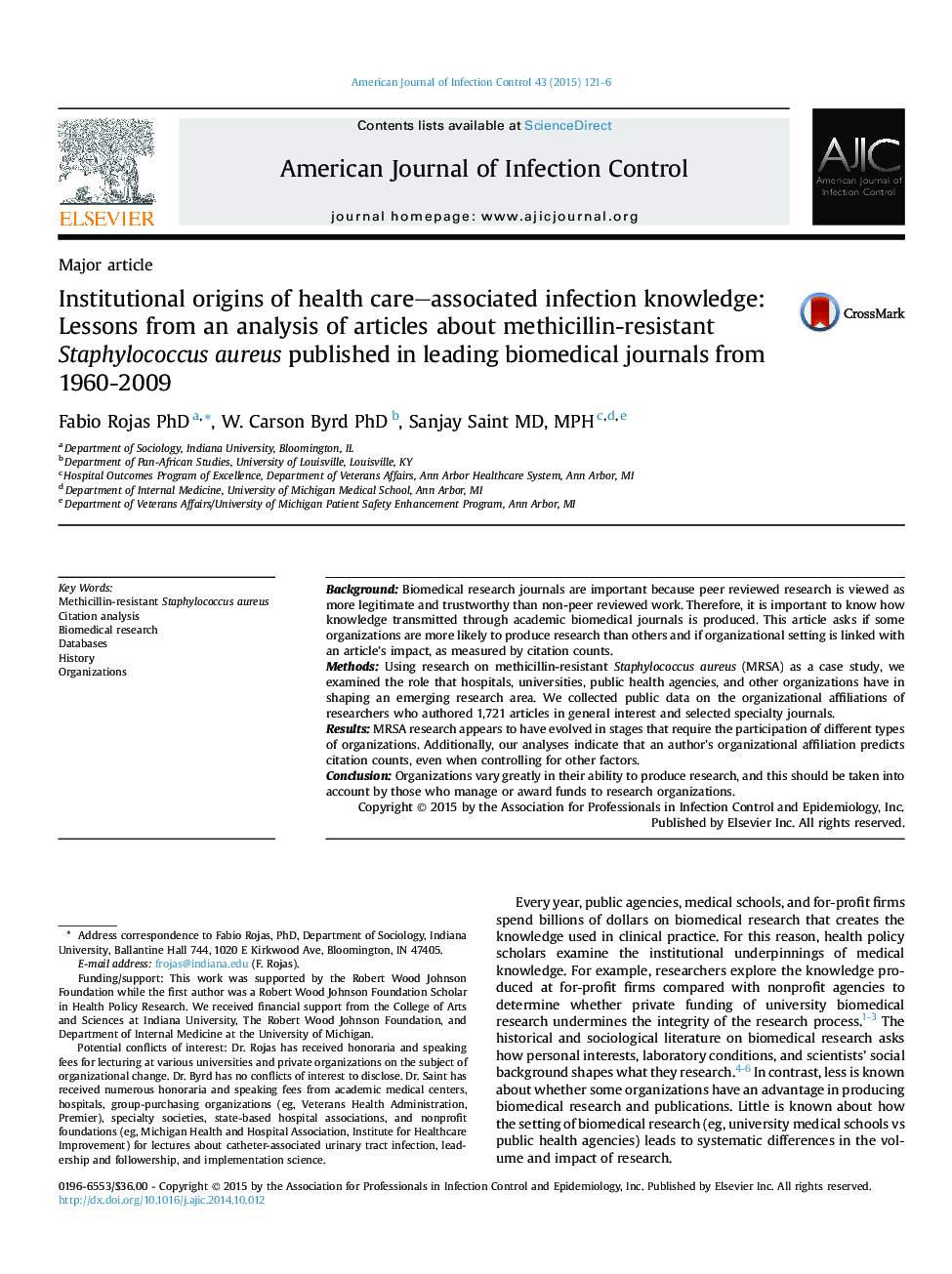| Article ID | Journal | Published Year | Pages | File Type |
|---|---|---|---|---|
| 5867419 | American Journal of Infection Control | 2015 | 6 Pages |
BackgroundBiomedical research journals are important because peer reviewed research is viewed as more legitimate and trustworthy than non-peer reviewed work. Therefore, it is important to know how knowledge transmitted through academic biomedical journals is produced. This article asks if some organizations are more likely to produce research than others and if organizational setting is linked with an article's impact, as measured by citation counts.MethodsUsing research on methicillin-resistant Staphylococcus aureus (MRSA) as a case study, we examined the role that hospitals, universities, public health agencies, and other organizations have in shaping an emerging research area. We collected public data on the organizational affiliations of researchers who authored 1,721 articles in general interest and selected specialty journals.ResultsMRSA research appears to have evolved in stages that require the participation of different types of organizations. Additionally, our analyses indicate that an author's organizational affiliation predicts citation counts, even when controlling for other factors.ConclusionOrganizations vary greatly in their ability to produce research, and this should be taken into account by those who manage or award funds to research organizations.
